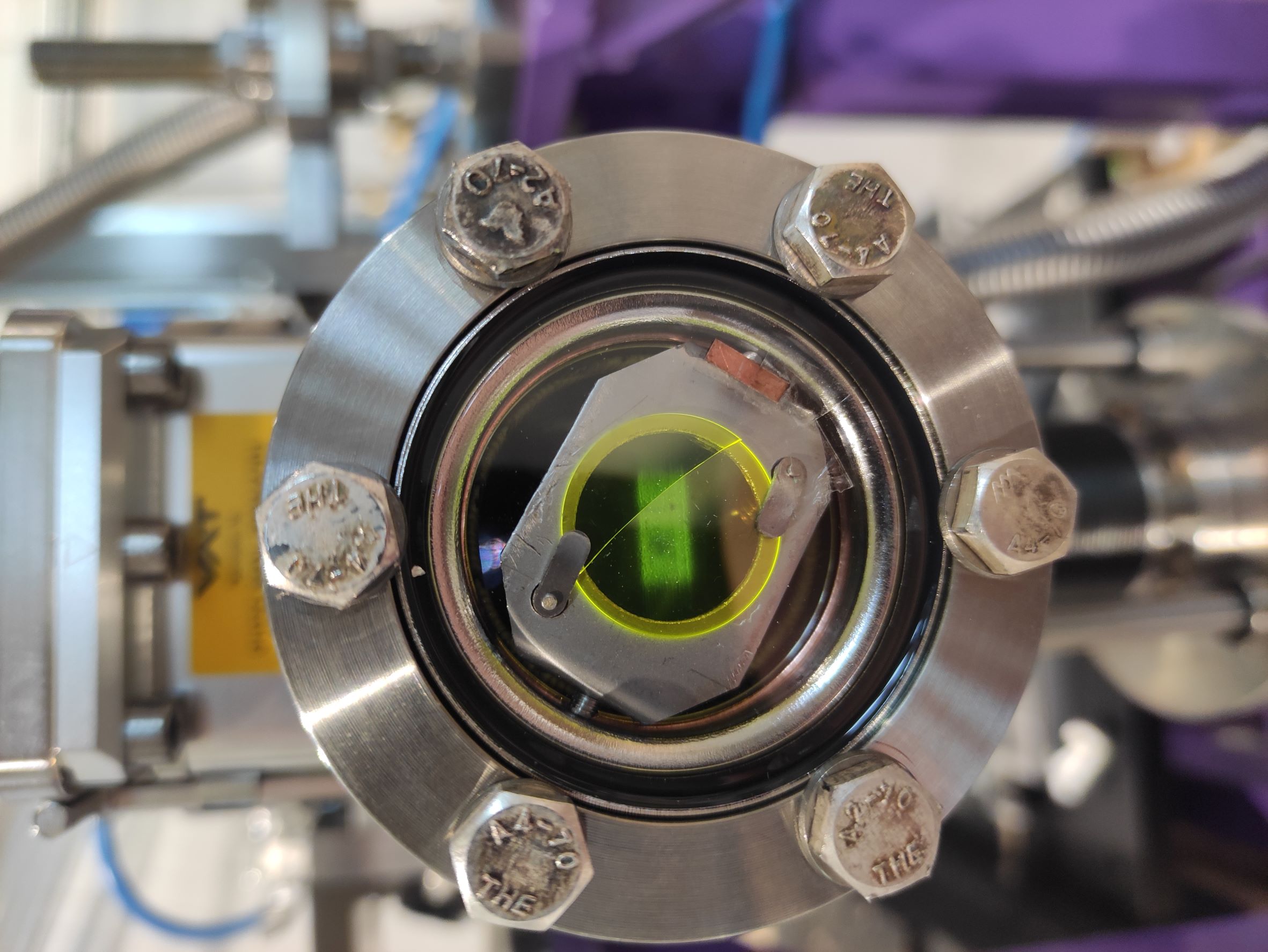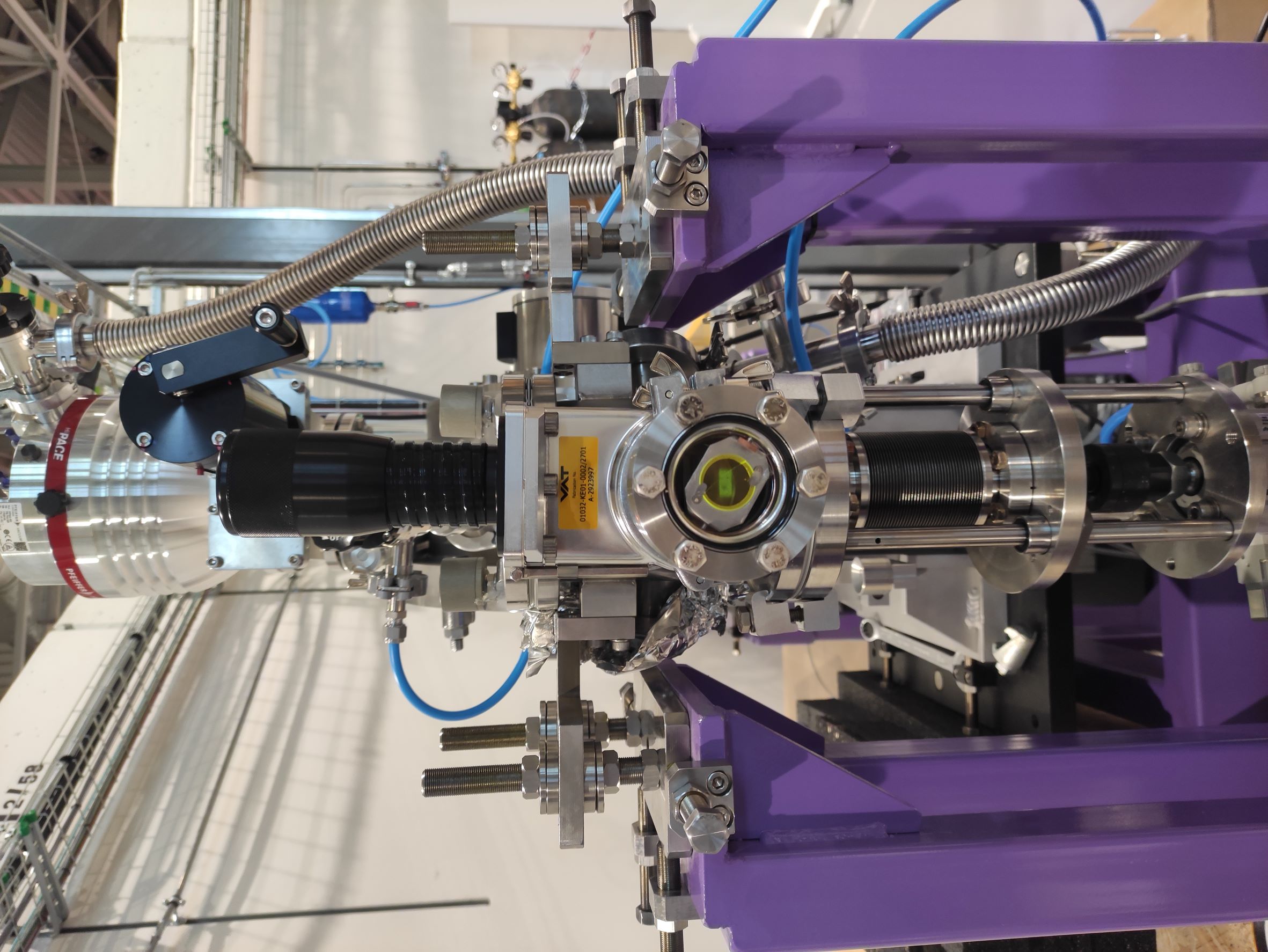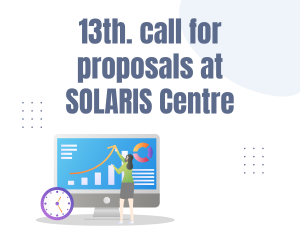
 Web Content Display
Web Content Display
SOLARIS centre
 Web Content Display
Web Content Display
 Web Content Display
Web Content Display
SOLABS beamline monochromator already installed!
The huge effort of the entire SOLARIS team was crowned with the installation of the heart of the newly constructing SOLABS beamline - its monochromator. On September 24, 2021, the beamline team observed a monochromatic beam of radiation on a YAG crystal mounted at the output of the monochromator. This is very good news not only for the team but also for users who will be able to apply for beamtime on SOLABS in the spring of 2022.
The new SOLABS beamline is being developed in cooperation the NCPS SOLARIS with the University of Applied Sciences Hochschule Niederrhein in Germany, the Synchrotron Light Research Institute in Thailand, and the Institute of Physics of Bonn University.
The SOLABS beamline, operating in the X-ray range from 1 to 15 keV, will enable X-ray absorption studies in the area of EXAFS / XANES (Extended X-ray absorption fine structure / X-ray absorption near edge structure) under high vacuum and atmospheric pressure.


The beamline will enable measurements at the K edges of the absorption of elements with a low atomic number, such as Mg, Al, Si, S, P. Such measurements are not common yet, but are possible only on modern, new-generation synchrotrons, such as SOLARIS in Krakow. Of course, the range of SOLABS energy (XAS-HN) also includes K edges of other elements including Se, some L edges of elements including Bi, and some M edges of elements including U, which allows testing of most known materials and emerging materials.
The SOLABS beamline will be dedicated to the investigation of both crystalline and amorphous materials in solid, liquid, and gas phases. The data from the XANES and EXAFS measurements will provide key information on the coordination environment, the average coordination number around the absorber atoms and bond lengths, and will allow to sequentially study the local structure of each selected chemical element as part of highly complex objects.
Due to the compact, simple design of the beamline, devoid of additional optics and radiation safety hutches, as well as the easy-to-use monochromator, SOLABS is a particularly user-friendly beamline, intended for advanced experiments by academic users and industries with varying experience degrees.
The beamline will be dedicated, among others, to:
• physics, chemistry and material research (research on alloys, oxide systems, catalysts, research on structural changes during fast processes),
• biomedicine (studies of the stability, absorption and therapeutic mechanism of action of inorganic and bio-inorganic drugs, eg. metalloproteins),
• environmental protection (tracking the degree and rate of bioaccumulation of toxic elements and the evolution of their chemical and structural state in the transition chain from the source of pollution to living organisms),
• archeology and protection of monuments (analysis of the chemical composition of paints, production technology, origin of historical artifacts)

